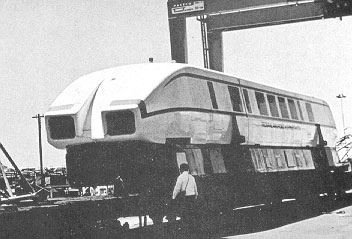 TRANSPORTING A $10 MILLION TRANSPORTER. This prototype, experimental air cushion vehicle
cost $10 million to develop. It was entrusted to SD&AE-SP near San Diego for its trip
to dot's (Department of Transportation) high-speed testing center at Pueblo, Colorado.
Designed to ride on a cushion of air over a magnetic force track arrangement - but here
riding on an SSW Hydra-Cushion flat car - this 2001 A.D. trolley has the capability of
carrying 60 passengers at 150 mph. Propelled by a pollution-free LIM (Linear Induction
Motor) , it has air intakes which suggest a BEM (Bug-Eyed Monster)-a long-time denizen
of science-fiction stories.
TRANSPORTING A $10 MILLION TRANSPORTER. This prototype, experimental air cushion vehicle
cost $10 million to develop. It was entrusted to SD&AE-SP near San Diego for its trip
to dot's (Department of Transportation) high-speed testing center at Pueblo, Colorado.
Designed to ride on a cushion of air over a magnetic force track arrangement - but here
riding on an SSW Hydra-Cushion flat car - this 2001 A.D. trolley has the capability of
carrying 60 passengers at 150 mph. Propelled by a pollution-free LIM (Linear Induction
Motor) , it has air intakes which suggest a BEM (Bug-Eyed Monster)-a long-time denizen
of science-fiction stories.
January-February, Pabe 15
Retirements
OTHERS
J. D. Gonzalez, asst. track foreman, SD&AE.
Spring, Page 16-17
Our Two-Nation Work Horse
IT'S A TWO-NATION RAILROAD that provides the only direct route east for San Diego area shippers.
That's the San Diego & Arizona Eastern Railway, an SP subsidiary that has been a major contributor to San Diego County's rapid growth in recent years. (The county is the second most populous in California.)
Traffic on the SD&AE averages around 20,000 carloads a year. Inbound shipments include building materials, feed grains, grocery items, beer and other alcoholic beverages, tinplate and LPG gas. Outbound, the railroad handles agricultural products, plaster and plaster board, pre-fabricated metal products, bulk salt, molasses and canned tuna.
Agricultural products include sugar beets, celery, tomatoes, cabbages and peppers-some grown in Baja California and some in the Chula Vista area south of San Diego.
Plaster City, 129 rail miles east of San Diego, is the location of the U.S. Gypsum Company plant, largest industry on the SD&AE. This plant ships gypsum, gypsum rock, plaster and plaster board and receives miscellaneous supplies in carload lots.
After gathering cars on three separate lines that snake through San Diego County, the SD&AE embarks on a "south of the border" journey into Baja California, before re-entering California to connect with the Southern Pacific at El Centro-a total distance of 147 miles. (Competing transcontinental rail service to San Diego is over a longer route via the Los Angeles area.)
The 44-mile stretch of track in Mexico, the Tijuana and Tecate Railway Company, was once owned and operated as a subsidiary of the SD&AE. In 1970, ownership was transferred to the Sonora-Baja California Railway, and the line thus became part of the Mexican government's national railroad system. The SD&AE retains operating rights over this line under an agreement with Mexico.
While the eastern terminus of the Tijuana and Tecate Railway (near Tecate) is marked on maps as an international point of entry, it is largely unseen, because the exact point is located midway through a 598-foot tunnel.
I The SD&AE is sometimes called the "impossible railroad" because of its 11-mile line through Carriso Gorge. Here the track winds along a man-made shelf on the mountain, as high as 900 feet above the canyon floor. The railroad's highest point is at Hipass, 3,660 feet above sea level.
The SD&AE-with its daily train in each direction between San Diego and El Centro-is strictly a freight hauler. Its last passenger train was discontinued nearly 25 years ago, and its present facilities are unsuitable even for excursion trips.
But this short line "work horse'" continues to provide an importanty mile-saving service to some 600 car-load shippers and receivers, both north and south of the border, in one of the West's most interesting and varied areas.

1. This trestle in the Carriso Gorge is 633 feet long and 185 feet high.

2. There are 21 tunnels on the 147-mile line between San Diego and El Centro.
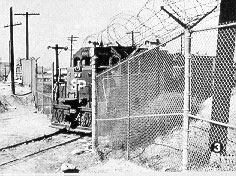
3. SD&AE's eastbound freight enters Mexico at Tijuana.
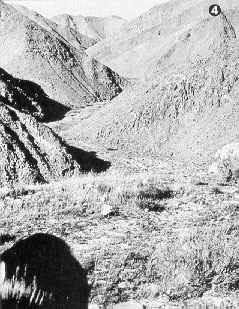
4. Typical of the rugged gorge country is this scene pictured through the window of an SP caboose.
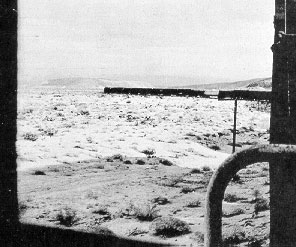
5. Daily train crosses desert area near Ocotillo, Calif. enroute to fertile Imperial Valley.

6. Supt. W. T. (Bill) Harral supervises day-to-day operations on the SD&AE.
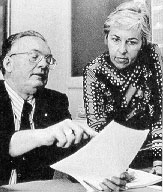
7. SD&AE Traffic Manager J. R. (Jim) Harris confers with his secretary, Mrs. Jackie Larsen.

8. Locomotive Engineer Ralph Carnahan operates eastbound train.
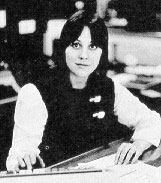
9. SD&AE's small office staff Marcy Marshall, secretary to superintendent.

10. SD&AE's small office staff Marian Harrod, secretary-file clerk.
Spring, Page 22
Retirements
OTHERS
B. Nelson, telegrapher-clerk, SD&AE.
Summer, Page 22
Retirements
OTHERS
L. C. Scheuerman, conductor, and H. J. Lapham, maintenance of equipment clerk, both of SD&AE.
Autumn
Deaths
OTHERS
J. M. Valenzuela, trackwalker and T. A. Whaley, boilermaker, SD&AE.
 Back to SP Bulletins
Back to SP Bulletins 